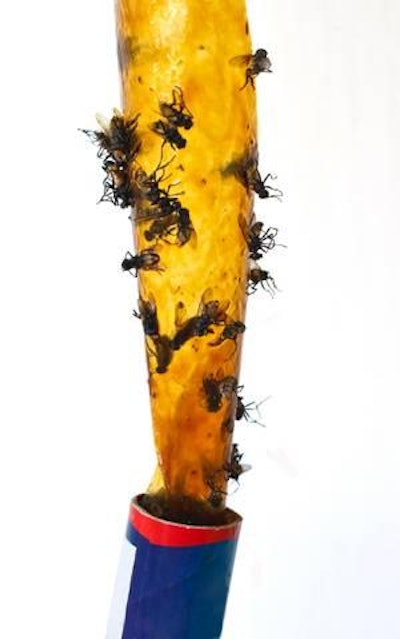
In the broiler and turkey industries, it is not uncommon to see average flock health and performance improvements following an outbreak of infectious disease in a region. At least part of the improvement in bird health and performance can be attributed to heightened biosecurity measures that are adopted to isolate affected farms from others to prevent spread of the disease and to end the outbreak. Everyone in the poultry industry has biosecurity measures and pest control programs that are supposed to be followed all of the time, but experience has shown that these things are sometimes allowed to slip when bird health is good or if budget cutbacks are required.
Implementation of FDA’s Egg Safety Rule last summer to control Salmonella enteritidis has served as a catalyst for the layer industry to refocus its attention on biosecurity, pest control, and cleaning and disinfection. Dr. Darrell W. Trampel, poultry extension veterinarian, Iowa State University College of Veterinary Medicine, believes that the Egg Safety Rule and the FDA’s on-farm inspections are having a positive impact on flock health. “Happily, at this time there are no health issues of concern beyond those which cause ‘typical’ mortality in pullet or layer flocks. The biggest health-related issue is associated with FDA's inspection of farms to ensure compliance with provisions of the Egg Safety Rule,” Trampel said.
Passing the exam
The FDA is in the process of inspecting the nearly 600 egg farms that have 50,000 or more layers for compliance with the Egg Safety Rule. This is the first time the agency has undertaken a task like this in the egg industry. Many people get anxious when an agency of the federal government announces plans to come on their property to inspect something, and egg producers are no different than anyone else in this regard. Let’s face it, the words “I’m from the government and I’m here to help” will send a shiver up most spines, but could these FDA inspections really be good for the industry?
The saying “what gets measured gets fixed” conveys the truth that people will pay attention to things that the organization and their bosses actually look at and consider to be important. Every egg farm might have already had a pest control program in place before the Egg Safety Rule, but were all aspects of the program checked on a routine basis and was this all documented? The simple acts of insisting that workers document activities and management following up and checking the documentation can increase the likelihood that all of the activities prescribed in the control program are completed. In school, how much would we have studied if there were no exam? Did we do all of our math homework problems if we knew the teacher wasn’t going to check our work? Inspections may give the prod the industry needs to keep on track with biosecurity measures and pest control programs.
UEP’s 5-Star Egg Safety Program has been revised to include an audit component to verify compliance. In the future, 5-Star audits can serve as the exam that stimulates the industry to keep pest control and biosecurity measures on the farm as must-do items.
Egg safety equals flock health
At first glance it may not seem logical that a food safety program could improve flock health, particularly since we all know that SE doesn’t make layers sick, but a closer look shows how logical it is. The bedrock of any program to exclude infectious disease from a farm will be to provide a means of controlling the movement of disease vectors on and off the farm. These vectors will include wild animals and birds, rodents, insects, people and equipment. A good farm biosecurity program will take effective steps to control the movement on and off the farm of these vectors with cleaning and disinfecting steps taken when movement is unavoidable. Whether the disease in question is exotic Newcastle, avian influenza, infectious laryngotracheitis or fowl cholera, most of the biosecurity steps will be the same and they will be just like many of the actions taken to exclude SE from the farm.
Pest management
Fly control is an important part of a program to exclude SE from the layer house. Controlling flies requires good manure management, either keeping the manure dry in the house or removing it on a regular basis. If manure is kept dry, fly larvae cannot develop. Dry litter also reduces bacterial activity in the manure, which means there is less ammonia in the layer house. Ultimately, lower ammonia concentrations in the air the birds breathe can lead to better health and performance.
Keeping rodents out of the layer or pullet house clearly reduces the risk of disease being introduced into the flock, but a good rodent control program can do more than this.
Rodents don’t just come into poultry houses because the temperature is comfortable; they are in the house looking for food. Rats and mice can eat a tremendous amount of feed, and excluding them from the house does save feed. With grain prices where they are now, the chickens need to be eating the feed, not the rodents.


















